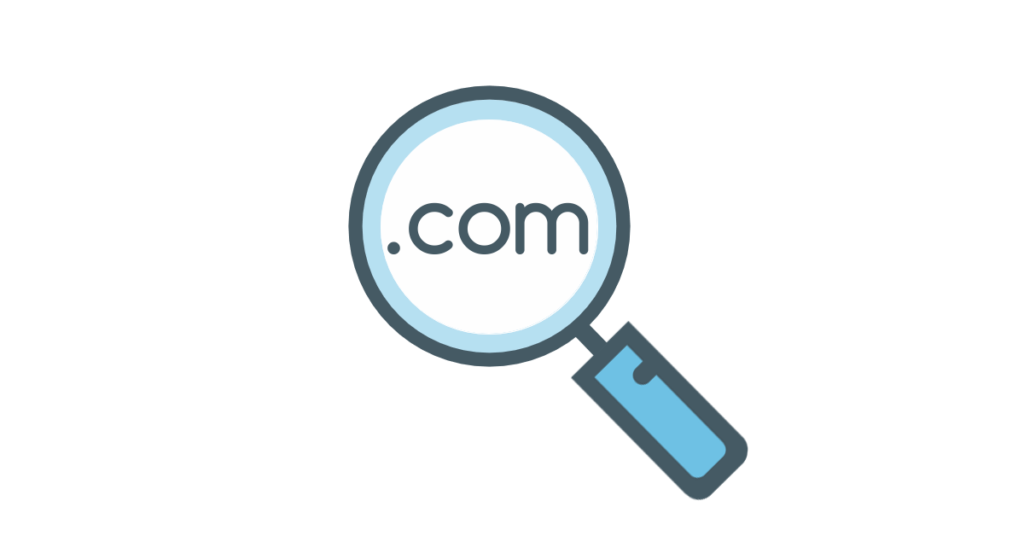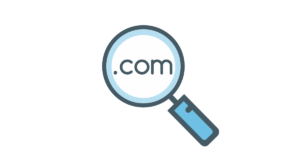A Website That Works is a Website that Produces Prospects
When agents think about modernizing their agency and attracting customers, the agency website is naturally one of the first things to evaluate. A good website is important, but let’s talk about what a good website is. The purpose of an insurance agency website isn’t to exhibit the talent of the web designer who built it. The website should be attractive and professional…but you aren’t looking to ‘impress’ your users. Your goal should be to communicate your agency culture- and add value for your prospects and customers. If you can do that using your website, you will have a significant competitive advantage.
It’s a fair question or critique for agents who might say that they don’t really know what prospects or customers are hoping to see when they visit the site. Part of knowing what actions to take involves an understanding of customer behavior. Incidentally- this is the primary value of our marketing intelligence platform. Seeing and understanding how users engage with you is the best way to inform decisions regarding how to invest time and resources when it comes to deciding how to invest your time and resources online. The goal is to anticipate what they are looking for and show it to them…before your competitor does. What you or I think about your website isn’t as relevant as what the data suggests based on how people interact with it- which is why monitoring your site’s performance and user behavior is so important.
For the focus of this article, let’s set aside the customer service portals and other elements targeted at existing customers. I’m not dismissing the importance of those things as unimportant- but odds are…you’re here to learn how to land more prospects and conversions, so with that in mind- let’s break down the important components of your using your website as a lead generation tool.
The 4 pillars of turning your agency website into a conversion machine are: Design, Engagement, Prospecting, and Promotion.
Design - Your Website's Curb Appeal
There are other things that are important to the site….but it does start with design.
Think of your website like your physical location if you had dozens of walk-ins each day. You would want your office to give a professional first impression- and that’s exactly what your website should do. You can’t necessarily “win” customers with a professional website, but you can probably lose them. If you really do have an outdated site, it doesn’t tell potential prospects anything useful about you, and it looks like you don’t have the resources to make it look more appealing. A good site isn’t necessarily a deal maker- but it can definitely be a deal breaker if it doesn’t meet minimum expectations for design and usability.
A visually appealing website is probably one of the cheapest and easiest things you can do. There are numerous vendors who can help- or you can use any number of website building services to build your own. Whether you plan to tackle it yourself or use a vendor, we recommend building and maintaining your site on WordPress. There are a lot of really good site builders- Wix, Squarespace, Godaddy, etc. However, WordPress is the most widely used website platform, and that fact alone makes it the best choice. There is a whole community of developers and services created specifically for WordPress sites, so finding features or custom solutions is usually a fairly easy thing to do.
WordPress is a CMS (Content Management System), but it has an infinite number of design options. If you’re managing your own website using WordPress, the first thing you do is pick a design ‘theme’. There are pre-configured designs you can choose from and this is where a good vendor (with insurance experience) really helps. You can give them examples of sites you like, and a good vendor can mimic them- or at least start with a similar theme and customize it for you. Themes are a head start, but they won’t be a finished product.
If your site is managed on WordPress, you may hear the term ‘plug-in’. This simply refers to a feature or function that is added to your site. Plugins are packages of code that are downloaded and installed on wordpress sites just like a program on your computer or an app on your phone- although many plugins do require varying degrees of technical expertise to configure and use. Most agents probably shouldn’t be creating or editing your own site- especially if this information is new to you, but being familiar with the concepts will help you communicate with your vendor.
If you are managing your website internally, use a good SEO plugin. Yoast is one of the most well known- but it does cost a bit more for the Pro version. SEOPress Pro is very comparable and actually has some good features that Yoast doesn’t. Paid subscribers are permitted to use our authentication key for this plugin at no charge. The plugin will analyze each page and show color coded results so you know what to improve.
Keep your load time down. Users hate waiting…and now the Google bots are factoring load time into your rankings. Fancy graphics and animations may look cool, but anything that causes your site to load slower will turn off users and kill SEO.
Easy navigation is important. Intuitive menus and buttons are key. People need to see things where they expect to see them, so using modern platforms and site templates is an absolute must.
Make sure your site is Mobile friendly. Navigate your own site on your phone. How does it look? Google Search Console (which is one of the free tools we provide support for) identifies mobile optimization. Mobile friendliness is also reflected in the weekly site reports- particularly if there are any problems with mobile formatting. A large % of the traffic you want to capture starts on mobile devices, so this is very important. Your site needs to look good and work as intended across all devices and browsers- including mobile devices and tablets which increasingly represent a majority of the online interactions.
A useful tool for finding potential performance problems is called a site audit (provided in our General SEO module). Subscribers know that regular site audits are a staple of the platform, but if you’re new- this report summarizes potential errors on your site. Maybe the pages load too slowly, maybe you have broken links, or pages with no links to them. Site audit robots catch all of this stuff and your site should be audited regularly so if there is an error somewhere, you find it before your potential customers do.
Ok- the site looks good and it functions well. Let’s look at the other elements that are really important.
Engagement - Get Your Visitors to Stay a While
I am not so subtly skipping over the elephant in the room of generating traffic- which is what our SEO and Ads content is about. We cover that- but not here. Assuming you do generate traffic- what is the first goal of your website? Engagement. When prospects land on the site, of course you want to make a prospect out of them- but first you have to engage them. So let’s talk about content.
Content, content, content. Outsourcing content is an option, and we’ll call that “stock content” sort of like “stock photos”. That has its place and can be an easy way to fill space, but ultimately, you want the most visible content on your website to reflect your agency’s culture and value proposition.
You and your staff talk to customers everyday. The themes of those repetitive conversations and questions should be addressed throughout your site. If a customer lands on your professional looking site…and then reads information or sees a video that actually addresses questions or concerns that people tend to have, it makes a big first impression. You’re the agent, you’re the expert. Ultimately, your content is what will set you apart from your competitors.
If you sell multiple products, it’s hard to prioritize because it implies that the other products are less important…and the reality is you probably want to ‘focus’ on all of your products, but you have to start somewhere. If you have stock content throughout your site, start with one product and really think about what you want to communicate to prospects. Give them information, insight…and a reason to engage with you.
It’s also a good idea to add relevant images on the page to break up the text. You can use infographics (pictures that illustrate the point you’re making using charts or graphs), and videos are also great as promotional engagement if you feel comfortable doing that. This page you’re reading, for example, is a bit intimidating. It’s instructional content and it’s a lot of information. There’s no simpler way to represent this level of detail, but when you’re working with customer facing content online, you would want the web page to look more like a 2nd grade picture book than a doctoral dissertation!
Once you have the anchor page optimized, now you can make a goal to write at least 3-500 words each month about that core line of business. When you do, make sure you sprinkle some links from that article back to the page you are promoting. The anchor pages and related pages and blogs should have links back to each other. This creates a network of pages that share common terms and topics, which is very practical for navigating your site and cross-promotion…but it also tells the search robots that there is a lot of relevant content on your site for whatever terms are the focus of those pages.
If you are promoting multiple lines of business, you’ll need to rotate and spit out multiple blogs throughout the month. You can write about current events that have insurance implications in your area- and tie that back to a particular product or industry page. This is also a good way to use 3rd party writing services, and there are a handful of good ones. Not all of your articles will get traction or be highly visible, but generating fresh content continually increases the size and scope of your site- which is appealing to customer and to search engines.
Later, we’ll talk about promoting your website…and the easiest thing to promote is great content!!
Prospecting - Take the Prospect Any Way They are Willing to Come
If your site is engaging- the next thing you want to do is turn that engagement into potential prospects. That happens using strategically placed and formatted “Calls to Action” (CTAs). This includes calls, quotes, and submissions or quote requests.
Instant online quotes are the pinnacle of engagement. The customer gets what they want- and you get the information of a warm prospect that has expressed an immediate interest. There are a number of comparative raters that offer consumer quote capacity in personal lines, and your carriers may also have proprietary systems available. While comparisons seem like a logical appeal to consumers, there is also a valid argument for simplification- meaning that the agency uses its knowledge of carriers and coverage to make explicit recommendations to customers that aren’t solely based on price.
Your customers are coming to you for guidance online. Your messaging needs to communicate expectations and differentiate you from being reduced to a calculator. Online quoting is not simply about pricing comparison. The odds are good that there are at least 3 other agents in your town that represent the same company- or multiple companies. The next generation of agency websites will need to incorporate the art of communicating value differences between policies and insurance companies as if the person were sitting in your office. This isn’t easy- but it’s one of the ways that the industry needs to evolve. For now- online customer quoting is still in its infancy- but we recommend using the best tools at your disposal and we will certainly be keeping our subscribers updated on new developments in this space.
Aside from instant quoting, other CTAs would include phone calls or online chats. These invitations should be placed prominently on every page on your site. It should feel to the user like your staff is waiting with baited breath to help the next person that takes the time to call (and then they should feel that way when they actually call)!
If you don’t have online quotes and the person doesn’t want to call, you also want to allow for “shy conversions”. Why do people type their information in…instead of just calling you? I don’t know- but they do…and if you handle these properly, it can save you a lot of time. Don’t tell them they are doing your data entry work for you…just let it happen. The easier and more compelling your interfaces are, the more information you are likely to get from prospective customers.
The last several engagement items we covered all lead to two important factors: time spent on your site and engagement with your site. In search engines, the rich get richer. When the search robots notice people spending more time on your site and using your site, they are more likely to send more users to your site. As more people engage, you move up. If few people spend little time, you will have a ceiling on your SEO- even if all of the technical elements are optimized. If you have good SEO but your site isn’t engaging, you might get some traffic, but no interactions. If you have good engagement but no traffic, it doesn’t do you much good. The trick is to get each of these wheels turning at the same time.
Promotion - Let Large Audiences Know Your Website is Useful
Ok, the last bit of our DEPP acronym is Promotion. Promoting your site involves good search engine optimization, advertising, soliciting referral links, and networking.
Align the message, target demographic, and SEO/ad method with the optimal landing page and desired CTA. For example: search engines love content. Your SEO strategy should focus heavily on pages with lots of text- because that is what is most likely to rank very well. Content heavy pages also work well as landing pages for display ads because they are shown to people who aren’t actively shopping but saw your ad (over and over again…) and decided to check you out. You don’t want to hit them immediately with requests for information. You want to provide valuable content and build credibility.
On the other hand- if you’re running search ads shown to customers who are actively looking for quotes….you better land them on a page that gives them quotes, or you will likely be wasting your advertising dollars. Customers will click off your page- back to the search results and find another site that is a better match for what they’re looking for.
All of the promotion of your site is done elsewhere online…and even in person through word of mouth and other very traditional networking processes. The most important thing is to make sure that what you are promoting matches what the prospect expects to see when they interact with your brand and your website. That is true whether you run an ad on Google or you strike up a conversation with someone in the grocery store.








